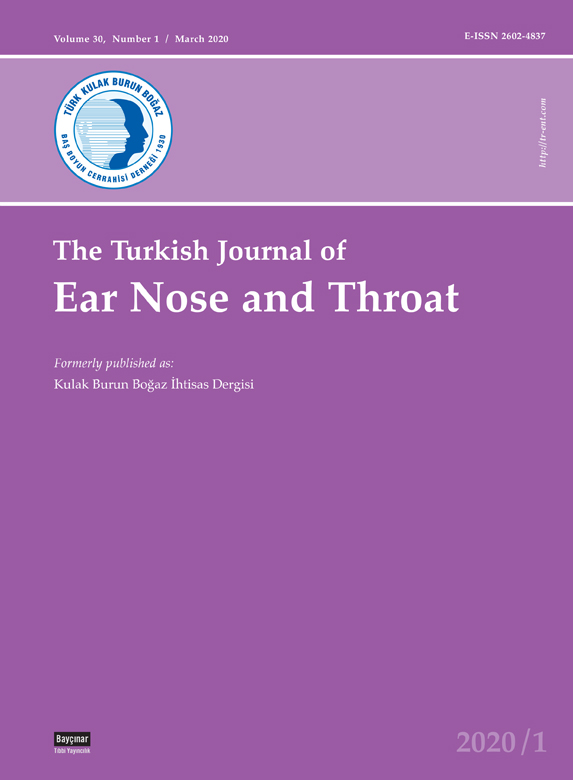
The Turkish Journal of Ear Nose and Throat
Yazarlar: H. Cem Gül, Ali Kurnaz, Vedat Turhan, Oral Öncül, Alahattin Pahsa
Konular:-
Anahtar Kelimeler:Anti-bacterial agents,Microbial sensitivity tests,Titis media,Suppurative/microbiology/drug therapy.
Özet: Objectives: This study sought to determine causative microorganisms of chronic suppurative otitis media and their antibacterial susceptibility. Patients and Methods: Bacteriologic results of middle ear swabs, agent microorganisms, and their susceptibility to antibiotics were evaluated in 70 patients (65 males, 5 females; mean age 21.1±1.3 years; range 19 to 25 years) with chronic suppurative otitis media. Results: No bacteria were isolated in 14% of the patients. Of 60 patients in whom bacteria were isolated, the most common bacteria was Pseudomonas aeruginosa (23%), followed by Staphylococcus aureus (18%), and Proteus spp. (17%). P. aeruginosa strains were susceptible to ceftazidime and imipenem (100%), ciprofloxacin (92%), and amikacin and gentamycin (85%); S. aureus strains were susceptible to methicillin and vancomycin (100%), ciprofloxacin (91%), sulbactam- ampicillin (73%), and gentamycin and trimethoprim- sulfamethoxazole (63%). Proteus strains were susceptible to ciprofloxacin (100%), ceftazidime (90%), and imipenem and gentamycin (70%). Conclusion: Appropriate knowledge of antibacterial susceptibility of microorganisms will contribute to rational antibiotic usage and the success of treatment for chronic suppurative otitis media.